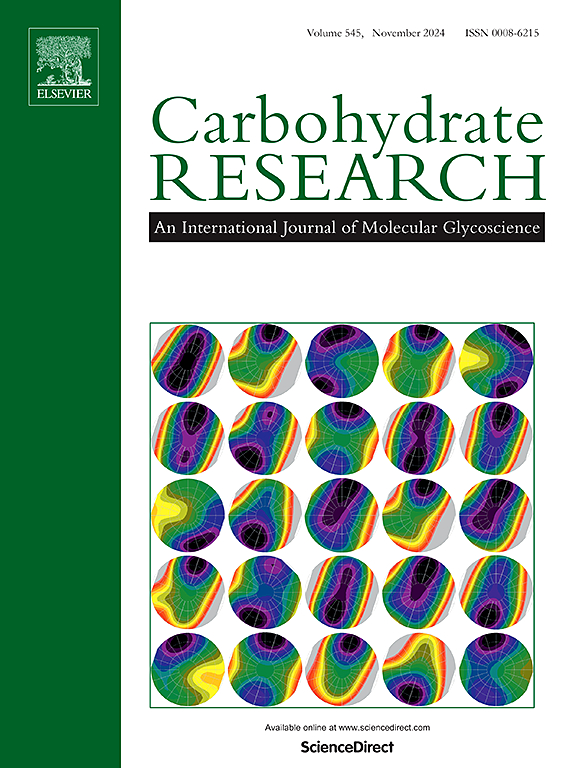Recent trends in the separation and analysis of chitooligomers
IF 2.4
3区 化学
Q3 BIOCHEMISTRY & MOLECULAR BIOLOGY
引用次数: 0
Abstract
Chitosan is a widely used linear biopolymer composed mainly of glucosamine and to a lesser extent of N-acetylglucosamine units. Many biological activities of chitosan are attributed to its shorter oligomeric chains, which consist of chitosan prepared either by enzyme activity (lysozyme, bacterial chitinase) or chemically by acid-catalyzed hydrolysis (e.g. in the stomach). However, these processes always result in a mixture of shorter chitooligosaccharides with varying degrees of acetylation whereas for relevant results of biological studies it is necessary to work with a precisely defined material. In this review, we provide an overview and comparison of analytical methods leading to the determination of the degree of polymerization (DP), the degree of acetylation (DA), the fraction of acetylation (FA) and the acetylation patterns (PA) of chitooligosaccharide chains and of the current state of knowledge on chitooligosaccharide separation. This review aims to present the most promising routes to well-defined low molecular weight chitosan with low dispersity.

壳寡聚物分离与分析的最新进展。
壳聚糖是一种广泛使用的线性生物聚合物,主要由氨基葡萄糖和少量的n -乙酰氨基葡萄糖组成。壳聚糖的许多生物活性归因于其较短的低聚链,这些低聚链由酶活性(溶菌酶,细菌几丁质酶)或化学酸催化水解(例如在胃中)制备的壳聚糖组成。然而,这些过程总是产生具有不同程度乙酰化的短壳寡糖混合物,而对于生物学研究的相关结果,有必要使用精确定义的材料。本文对壳低聚糖链的聚合度(DP)、乙酰化度(DA)、乙酰化分数(FA)和乙酰化模式(PA)的分析方法进行了综述和比较,并对壳低聚糖分离的现状进行了评述。本文综述了制备低分子量低分散壳聚糖的新途径。
本文章由计算机程序翻译,如有差异,请以英文原文为准。
求助全文
约1分钟内获得全文
求助全文
来源期刊

Carbohydrate Research
化学-生化与分子生物学
CiteScore
5.00
自引率
3.20%
发文量
183
审稿时长
3.6 weeks
期刊介绍:
Carbohydrate Research publishes reports of original research in the following areas of carbohydrate science: action of enzymes, analytical chemistry, biochemistry (biosynthesis, degradation, structural and functional biochemistry, conformation, molecular recognition, enzyme mechanisms, carbohydrate-processing enzymes, including glycosidases and glycosyltransferases), chemical synthesis, isolation of natural products, physicochemical studies, reactions and their mechanisms, the study of structures and stereochemistry, and technological aspects.
Papers on polysaccharides should have a "molecular" component; that is a paper on new or modified polysaccharides should include structural information and characterization in addition to the usual studies of rheological properties and the like. A paper on a new, naturally occurring polysaccharide should include structural information, defining monosaccharide components and linkage sequence.
Papers devoted wholly or partly to X-ray crystallographic studies, or to computational aspects (molecular mechanics or molecular orbital calculations, simulations via molecular dynamics), will be considered if they meet certain criteria. For computational papers the requirements are that the methods used be specified in sufficient detail to permit replication of the results, and that the conclusions be shown to have relevance to experimental observations - the authors'' own data or data from the literature. Specific directions for the presentation of X-ray data are given below under Results and "discussion".
 求助内容:
求助内容: 应助结果提醒方式:
应助结果提醒方式:


